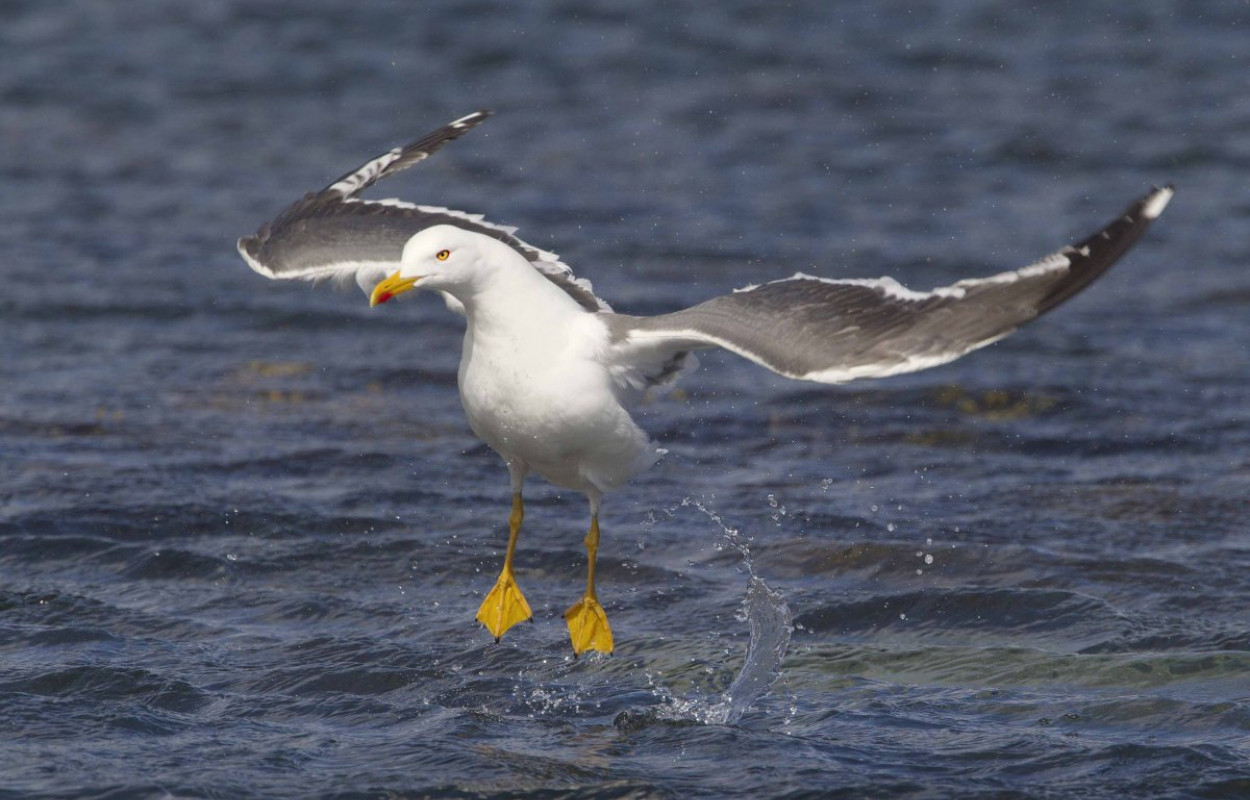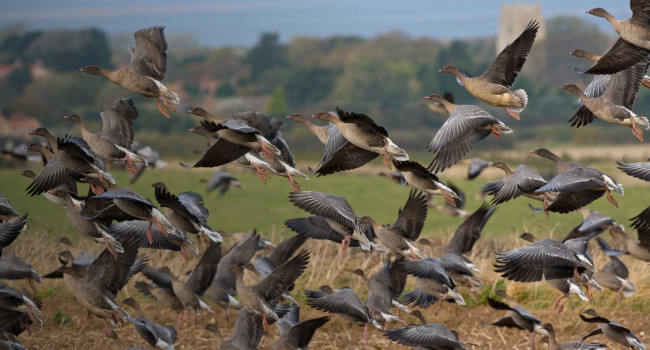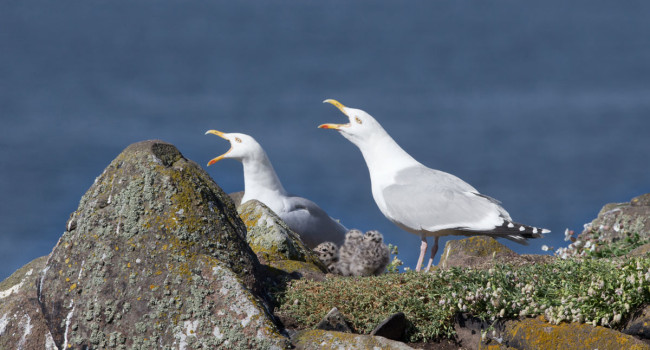Seabird–wind farm interactions during the breeding season vary within and between years: A case study of lesser black-backed gull Larus fuscus in the UK

Author(s): Thaxter, C.B., Ross-Smith, V.H., Bouten, W., Clark, N.A., Conway, G.J., Rehfisch, M.M. & Burton, N.H.K.,
Published: March 2015
Journal: Biological Conservation Volume: 186 ( part 2015 )
Digital Identifier No. (DOI): 10.1016/j.biocon.2015.03.027
The marine environment is increasingly subject to pressure from human activities, with knock on effects for wildlife. Many studies over recent years have attempted to assess the risk of offshore wind turbines to seabirds. Birds might be injured or killed through collision with turbines or associated structures, they might be displaced from an area they previously used, and they could suffer energetic costs of bypassing a wind farm instead of commuting straight through. BTO has been using long-lived GPS tags to conduct a multi-year study into the possible effects of offshore wind farms on Lesser Black-backed Gulls. Results show that birds’ use of the environment varies between individuals, throughout the breeding season and over the years. This information is essential to estimate the magnitude of risks posed by offshore wind developments to seabird populations as accurately as possible.
Wind farm use varies
BTO scientists, led by Chris Thaxter, tracked twenty-five Lesser Black-backed Gulls breeding at Orford Ness on the Suffolk coast, in three consecutive summers. The study found that gulls visited areas where offshore wind farm developments are proposed significantly more often in some years than in others. In every year, birds spent more time in wind farms zones when their chicks were young than at other times in the breeding season. Males also spent more time in these zones than females later on in the breeding season, when chicks were growing bigger and more independent. Such seasonal variation could be mediated by changes in the availability of prey preferred by adults, and by changes in the nutritional requirements of their offspring at different stages in their development. Individual variation could be determined by dietary specialisations.
These results indicate just how varied individual seabirds can be in their behaviour, and highlight the value of long-term tracking data sets in estimating potential impacts of offshore wind farms on seabird populations. Offshore wind farms are a key part of the UK Government’s plan to obtain 15% of the country’s energy from renewable sources by 2020. It is therefore important to properly assess and quantify the impact that such developments could have on marine wildlife and habitats.
Notes
This study was funded by the Department of Energy and Climate Change (DECC). Thanks to John Hartley (Hartley Anderson), Emma Cole, Mandy King, Sophie Thomas and James Burt (DECC) for their support of the work at Orford Ness. Thanks to the National Trust, RSPB and Natural England for permissions. The UvA-Bits tracking studies are facilitated by infrastructures for e-Science, developed with support of the NLeSC (http://www.esciencecenter.com/) and LifeWatch, carried out on the Dutch national e-infrastructure with support of SURF Foundation. The latest GPS tracking data for this project can be viewed at: http:// www.uva-bits.nl/project/seabird-windfarm-interactions/.










Share this page